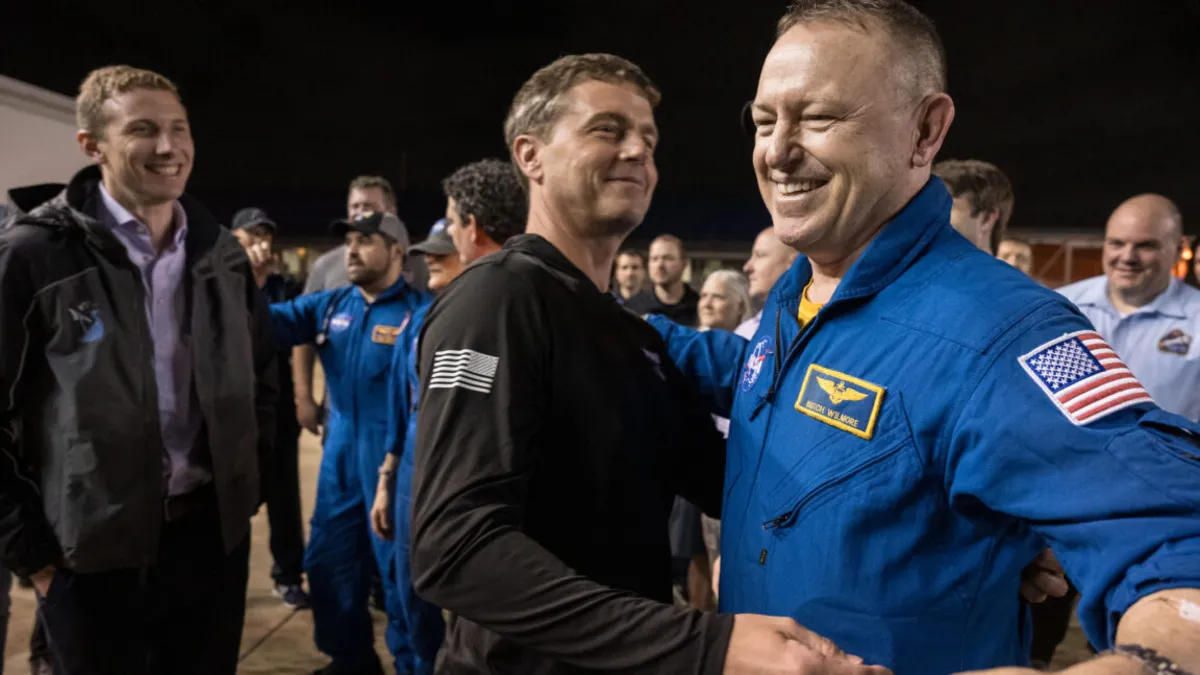
During its ascent toward the International Space Station last summer, the Starliner spacecraft faced a critical incident, losing four of its thrusters. NASA astronaut Butch Wilmore was forced to take manual control of the vehicle as it approached the station. Unfortunately, with the failure of multiple thrusters, Wilmore struggled to maneuver Starliner in the desired direction. Together with his crewmate, astronaut Suni Williams, they were acutely aware of their intended destination—a mere stone's throw from the space station, which would serve as a safe harbor if only they could reach it. However, the loss of so many thrusters breached the mission's flight rules, which dictated a return to Earth in such circumstances. This situation raised the question: What if returning home was also not a safe option?
Wilmore expressed his concerns during an interview, stating, “I don't know that we can come back to Earth at that point. I don't know if we can. And, as a matter of fact, I'm thinking we probably can't.” Following their return to Earth aboard a Crew Dragon vehicle two weeks later, Wilmore and Williams held a news conference at the Johnson Space Center in Houston. The conference attracted a global audience of reporters eager to hear about their mission. Many inquiries revolved around the politically charged conclusion of their mission, with claims from the Trump White House suggesting they had rescued the astronauts after being stranded by the Biden administration. However, as active astronauts, Wilmore and Williams maintained their professionalism, carefully sidestepping political discussions.
As Wilmore and I concluded our conversation during his final interview of the day, I was eager to learn about the untold stories from their flight aboard Starliner. The challenges with the spacecraft's propulsion system had significant implications, leading to the decision to fly Starliner home without a crew and ultimately reshaping the Crew-9 mission. My history with Wilmore, spanning over a decade, allowed for a candid exchange about their experiences and anxieties during the flight.
The Starliner spacecraft faced numerous delays leading up to its first crewed mission, which finally launched on June 5, 2024. Among the setbacks were a faulty valve on the Atlas V rocket's upper stage and a helium leak within Starliner itself. Following these issues, Wilmore took the initiative to return to Houston for additional simulator training to keep his skills sharp. Eventually, favorable weather conditions permitted the Starliner Crew Flight Test to launch from Cape Canaveral, Florida, marking a historic moment as the first human launch on the Atlas V rocket.
Both Wilmore and Williams described the launch as exhilarating. Williams recalled, “Oh man, the launch was awesome. Both of us looked at each other like, 'Wow, this is going just perfectly.'” Wilmore echoed those sentiments, noting the precise trajectory of the rocket and the impressive performance of the dual-engine Centaur upper stage.
After successfully detaching from the Atlas V rocket, Wilmore and Williams conducted several maneuvering tests, during which Starliner demonstrated impressive capabilities. Wilmore rated the handling of the spacecraft exceptionally high but was soon faced with a chilling reality. As they attempted to rest before their crucial docking with the International Space Station, they found themselves uncomfortably cold inside the spacecraft. With temperatures dipping to around 50°F, both astronauts resorted to donning their spacesuits to stave off the chill.
As the crew prepared for docking, Wilmore's concern centered on the performance of Starliner's reaction control system thrusters. With 28 thrusters distributed across the spacecraft, their functionality was crucial for the docking maneuver. Wilmore had previously expressed his concerns about these thrusters to Boeing executives, fearing potential failures that could compromise their mission.
As Starliner approached the space station, the situation escalated when Wilmore lost the first thruster. As they neared the V-bar, a second thruster failed, leaving the crew with a single fault tolerance. Wilmore's thoughts raced as he navigated the precarious situation, balancing the risk of docking against the potential dangers of returning to Earth.
At NASA's Mission Control, Flight Director Ed Van Cise and his team were acutely aware of the developing situation. They were faced with a critical decision: whether to allow Starliner to proceed with docking despite the loss of thrusters. As Starliner closed in on the space station, Van Cise and his team devised a plan to reset the failed thrusters, a risky move that required Wilmore to relinquish control of the spacecraft temporarily.
Wilmore narrated the tension-filled moments leading up to this decision, recounting how he had to trust the systems in place while the spacecraft drifted away from the space station. “That was not easy to do,” he admitted, reflecting on his extensive training and familiarity with orbital dynamics.
When Wilmore finally handed control back to Mission Control, the team successfully managed to reactivate two of the failed thrusters. This victory restored some level of control, but the team remained cautious as they approached the docking procedure. Ultimately, Starliner successfully docked with the space station, eliciting a wave of relief and joy from both astronauts.
Reflecting on the experience, Williams expressed her happiness at successfully docking with the space station, stating that they were “super happy” and relieved to be safe. Yet, both astronauts recognized the challenges ahead as they awaited further assessments of the spacecraft’s capabilities for their return journey to Earth.
In the aftermath of the mission, Wilmore expressed skepticism about the safety of using Starliner for their return. Despite public statements of confidence from NASA and Boeing regarding the spacecraft's suitability, the astronauts' firsthand experiences led them to question its reliability for crewed flights. Wilmore shared his doubts, stating, “I was thinking, we might not come home in the spacecraft. We might not.”
The journey of the Starliner spacecraft has underscored the complexities involved in space travel and the importance of rigorous safety protocols. As NASA and Boeing continue to evaluate the spacecraft's performance, both astronauts remain hopeful for successful future missions while prioritizing the safety of their crew.